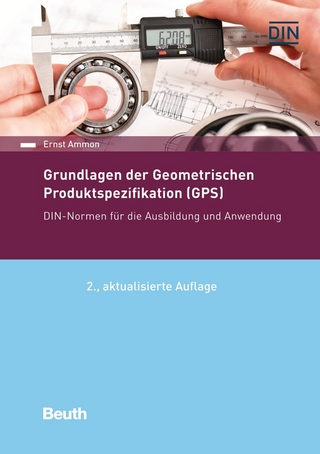
Neural Models and Algorithms for Digital Testing
Springer-Verlag New York Inc.
978-1-4613-6767-3 (ISBN)
References . . . . . . . . . . . . . . . . . . . . . . . . . . . . 82 9 QUADRATIC 0-1 PROGRAMMING 8S 9. 1 Energy Minimization 86 9. 2 Notation and Tenninology . . . . . . . . . . . . . . . . . 87 9. 3 Minimization Technique . . . . . . . . . . . . . . . . . . 88 9. 4 An Example . . . . . . . . . . . . . . . . . . . . . . . . 92 9. 5 Accelerated Energy Minimization. . . . . . . . . . . . . 94 9. 5. 1 Transitive Oosure . . . . . . . . . . . . . . . . . 94 9. 5. 2 Additional Pairwise Relationships 96 9. 5. 3 Path Sensitization . . . . . . . . . . . . . . . . . 97 9. 6 Experimental Results 98 9. 7 Summary. . . . . . . . . . . . . . . . . . . . . . . . . . 100 References . . . . . . . . . . . . . . . . . . . . . . . . . . . . 100 10 TRANSITIVE CLOSURE AND TESTING 103 10. 1 Background . . . . . . . . . . . . . . . . . . . . . . . . 104 10. 2 Transitive Oosure Definition 105 10. 3 Implication Graphs 106 10. 4 A Test Generation Algorithm 107 10. 5 Identifying Necessary Assignments 112 10. 5. 1 Implicit Implication and Justification 113 10. 5. 2 Transitive Oosure Does More Than Implication and Justification 115 10. 5. 3 Implicit Sensitization of Dominators 116 10. 5. 4 Redundancy Identification 117 10. 6 Summary 119 References . . . . . . . . . . . . . . . . . . . . . . . . . . . . 119 11 POLYNOMIAL-TIME TESTABILITY 123 11. 1 Background 124 11. 1. 1 Fujiwara's Result 125 11. 1. 2 Contribution of the Present Work . . . . . . . . . 126 11. 2 Notation and Tenninology 127 11. 3 A Polynomial TlDle Algorithm 128 11. 3. 1 Primary Output Fault 129 11. 3. 2 Arbitrary Single Fault 135 11. 3. 3 Multiple Faults. . . . . . . . . . . . . . . . . . . 137 11. 4 Summary. . . . . . . . . . . . . . . . . . . . . . . . . . 139 References . . . . . . . . . . . . . . . . . . . . . . . . . . . . 139 ix 12 SPECIAL CASES OF HARD PROBLEMS 141 12. 1 Problem Statement 142 12. 2 Logic Simulation 143 12. 3 Logic Circuit Modeling . 146 12. 3. 1 Modelfor a Boolean Gate . . . . . . . . . . . . . 147 12. 3. 2 Circuit Modeling 148 12.
1 Introduction.- 1.1 What is Test Generation?.- 1.2 Why Worry About Test Generation?.- 1.3 How About Parallel Processing?.- 1.4 Neural Computing.- 1.5 A Novel Solution.- 1.6 Polynomial Time Test Problems.- 1.7 Application to Other NP-complete Problems.- 1.8 Organization of the Book.- References.- 2 Logic Circuits and Testing.- 2.1 Logic Circuit Preliminaries.- 2.2 Test Generation Problem.- 2.3 Test Generation Techniques.- 2.4 Parallelization.- References.- 3 Parallel Processing Preliminaries.- 3.1 Synchronous Parallel Computing.- 3.2 Parallel Test Generation.- References.- 4 Introduction to Neural Networks.- 4.1 Discrete Model of Neuron.- 4.2 Electrical Neural Networks.- References.- 5 Neural Modeling for Digital Circuits.- 5.1 Logic Circuit Model.- 5.2 Existence of Neural Models.- 5.3 Properties of Neural Models.- 5.4 Three-Valued Model.- 5.5 Summary.- References.- 6 Test Generation Reformulated.- 6.1 ATG Constraint Network.- 6.2 Fault Injection.- 6.3 Test Generation.- 6.4 Summary.- References.- 7 Simulated Neural Networks.- 7.1 Iterative Relaxation.- 7.2 Implementation and Results.- 7.3 Parallel Simulation.- 7.4 Summary.- References.- 8 Neural Computers.- 8.1 Feasibility and Performance.- 8.2 ANZA Neurocomputer.- 8.3 Energy Minimization.- 8.4 Enhanced Formulation.- 8.5 ANZA Neurocomputer Results.- 8.6 Summary.- References.- 9 Quadratic 0-1 Programming.- 9.1 Energy Minimization.- 9.2 Notation and Terminology.- 9.3 Minimization Technique.- 9.4 AnExample.- 9.5 Accelerated Eneigy Minimization.- 9.6 Experimental Results.- 9.7 Summary.- References.- 10 Transitive Closure and Testing.- 10.1 Background.- 10.2 Transitive Closure Definition.- 10.3 Implication Graphs.- 10.4 A Test Generation Algorithm.- 10.5 Identifying Necessary Assignments.- 10.6 Summary.- References.- 11 Polynomial-time Testability.- 11.1 Background.- 11.2 Notation and Terminology.- 11.3 A Polynomial Time Algorithm.- 11.4 Summary.- References.- 12 Special Cases of Hard Problems.- 12.1 Problem Statement.- 12.2 Logic Simulation.- 12.3 Logic Circuit Modeling.- 12.4 Simulation as a Quadratic 0-1 Program.- 12.5 Quadratic 0-1 Program as Simulation.- 12.6 Minimizing Special Cases.- 12.7 Summary.- References.- 13 Solving Graph Problems.- 13.1 Background.- 13.2 Notation and Terminology.- 13.3 Maximum Weighted Independent Sets.- 13.4 Conflict Graphs of Boolean Gates.- 13.5 AnExample.- 13.6 Summary.- References.- 14 Open Problems.- References.- 15 Conclusion.
| Erscheint lt. Verlag | 28.9.2012 |
|---|---|
| Reihe/Serie | The Springer International Series in Engineering and Computer Science ; 140 |
| Zusatzinfo | XIII, 184 p. |
| Verlagsort | New York, NY |
| Sprache | englisch |
| Maße | 155 x 235 mm |
| Themenwelt | Informatik ► Weitere Themen ► CAD-Programme |
| Technik ► Elektrotechnik / Energietechnik | |
| ISBN-10 | 1-4613-6767-0 / 1461367670 |
| ISBN-13 | 978-1-4613-6767-3 / 9781461367673 |
| Zustand | Neuware |
| Haben Sie eine Frage zum Produkt? |
aus dem Bereich


